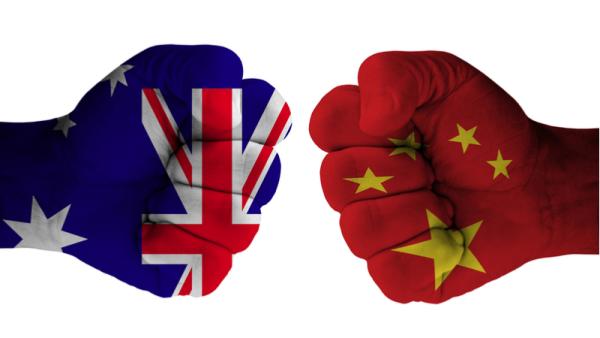Hasanov Jeyhun / Shutterstock

Bob Carr, Director, Australia-China Relations Institute, University of Technology Sydney |
This article appeared in The Australian Financial Review on April 3 2019.
Opinion has firmed that Beijing’s restrictions on Australian coal are intended to send a message. Imposed in December the restrictions are seeing coking coal from Australia fall 21 per cent while imports of Mongolian coal rose 47 per cent. It’s wiped billions of dollars off mining stocks.
Given the positive rhetoric about the China relationship under Scott Morrison it seems likely this is about the decision last August to exclude Huawei from supplying non-core parts of the 5G network.
In the Huawei decision I am neutral. I’m not privy to the security briefings that informed it. As foreign minister in 2012 I defended a decision of the Gillard government that excluded Huawei from bidding for work on our national broadband network. I told the Chinese that every country is entitled to protect the security of its communications.
But a review of the decision on Huawei suggests it may be how it was packaged rather than the decision itself that is now hurting exporters.
We manage two big relationships – one with the great power that supplies our security now lapsed into the erratic unilateralism of America First, the other with the country that soaks up one-third of our exports rudely wedded to its own political system.
Some diplomatic deftness is mandated.
Let’s assume that we had no alternative but to exclude China’s top telco because of our own security assessment or the tug of alliance loyalty.
Did we, however, have to be the first of America’s allies to plunge in? The UK has taken time to mull the advice of its MI6 chief, Alex Younger, that it was 'a more complicated decision than in or out', that is, just banning the company. Germany is resisting public bullying being mounted on the issue by Trump’s ambassador. Canada and New Zealand have stopped short of definitive announcements by their heads of government.
Not only were we the first to go but someone in government helpfully let it be known that then-prime minister Malcolm Turnbull had telephoned Donald Trump to report cabinet’s decision.
Transmitting the message at heads of government level meant we were elevating it. Leaking it meant we wanted it known everywhere we had dutifully delivered the news to Washington. On his last Sunday as PM Turnbull fulfilled Gareth Evans’ description of an alliance loyalist turning over like a puppy wanting his tummy tickled.
If some in Canberra wanted to give the impression the Huawei decision was about supporting the US more than guarding our own interests they achieved it with another leak. An article by Chris Uhlmann and Angus Grigg in The Sydney Morning Herald on December 13, 2018, carried the heading 'How the Five Eyes Cooked Up the Campaign to Kill Huawei'. It reported a dinner in Canada last July of Five Eyes intelligence chiefs. Over Novia Scotia lobster and local vintages the chiefs resolved on acting against Huawei and would recruit Japan and Germany.
This may be the first time Five Eyes discussions have been publicised. Whether MI6 and the CIA thought it appropriate can only be speculated on. Perhaps one of the three Australian security chiefs wanted to lob a grenade into Australia-China relations at a time Prime Minister Scott Morrison was recalibrating the Australian rhetoric that ruptured the relationship in 2017.
To any DFAT professional it might look like someone else wanted to take charge of a relationship it thought too important to be left to diplomats.
China’s foreign ministry could hardly ignore these messages – the alacrity of Australia’s ban – even before the US had finalised its decision, and the fact our then-prime minister considered it a gesture of loyalty to the Trump administration. And we allowed one of our spy agencies to advertise that, over a rollicking dinner, we had ganged up with partners to gun down one of our major trading partner’s lead companies.
That article quoted Mike Burgess, director-general of the Australian Signals Directorate, 'trolling' Huawei on his Twitter account. This was the most publicity the Australian Signals Directorate has received since the revelations in 2013 it had tapped the phone of the Indonesian president – proven friend of Australia, and his wife as well – a chilling error of judgment and misuse of spycraft that reminded Jakarta how slippery their southern neighbour, and how hypocritical when it professes undying friendship with 270 million Indonesians.
That there were superior diplomatic options was confirmed when Japan quietly let slip its own negative decision on Chinese telecom equipment last December. There was no article in the Asahi Shimbun reporting their prime minister had panted the news to the West Wing, no hint Japan had given its security chiefs a run at celebrating the decision – over spiny lobster sashimi or anything else. There’s no speculation it will rupture the China-Japan rapprochement under way for the past year.
On Friday, The Australian Financial Review quoted one Chinese analyst saying that China is cutting down on coal imports anyway 'so why not start with the country you don’t like'.
Sustained work clinched us that title.
Author
Bob Carr, former NSW premier and Australian foreign minister, is Director of the Australia-China Relations Institute at the University of Technology Sydney.


